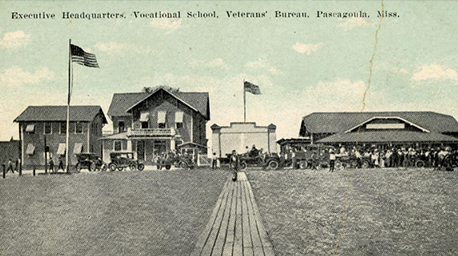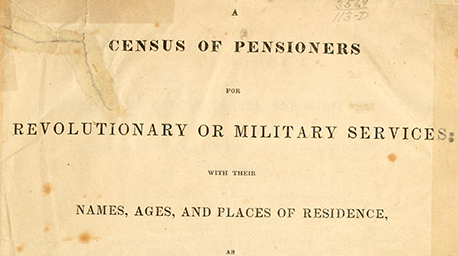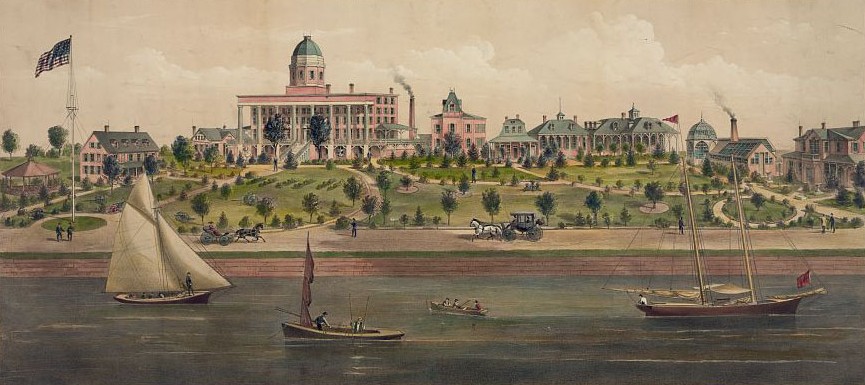
A blue circle with a golden phoenix rising from the ashes. This was the shoulder patch worn by the more than 1,000 physicians, dentists, and other medical professionals serving in the U.S. Army who were assigned to Veterans Administration hospitals during World War II.
In 1940, with war already raging in Europe and Asia, VA began preparing for potential American involvement in the conflict. VA Administrator Frank T. Hines informed Congress that the agency was coordinating with the War Department to assist in the event of a national emergency with both hospital bed space and highly trained medical staff.
Following the Japanese attack on Pearl Harbor and America’s entry into World War II, the U.S. Army’s need for physicians and other healthcare professionals was acute. As the Surgeon General of the Army, Maj. Gen. Norman T. Kirk, bluntly reported, “It was difficult during the past year to secure the additional Medical Corps officers needed to meet the requirements of the increasing Army since there are not sufficient physicians available to meet both military and civilian medical needs.”
The military’s demand for healthcare professionals drained staff from the civilian medical community and VA alike. Between 1942 and mid-1944, 16 percent of VA employees were furloughed for military service. Draft deferments were possible for those supporting national health but were rare. Well into the war, only 23 deferments for VA employees had been issued by civilian authorities.
The loss of so many skilled medical workers created its own set of problems for VA, especially as the war progressed and newly discharged Veterans with injuries filled up VA hospital beds. A December 1943 agreement between Secretary of War Henry L. Stimson and VA’s Administrator paved the way for a collaborative use of limited medical personnel. Their solution included inducting select VA doctors and dentists into the Army but allowing them to remain at VA facilities.
Surgeon General Kirk reported that “984 physicians who were on duty with the Veterans Administration were commissioned in the Medical Corps of the Army in grades commensurate with their former civil service ratings and placed on duty with that organization.” By December 1944, the Army listed 1,622 Medical Corps and 149 Dental Corps officers assigned to VA.

In addition to physicians and dentists, demand was also high for nurses, orderlies, and related positions. However, by the later stages of the war, VA had creatively adjusted to these personnel shortages. To fill nursing vacancies, hospitals were authorized to recruit locally, using a variety of sources including nursing assistants and volunteer nurse aides. Hospitals also utilized detachments of enlisted men assigned to limited service, conscientious objectors, and even prisoners of war as hospital attendants.
While detailed to VA, Army personnel wore a distinctive shoulder sleeve insignia designed by the Heraldic Section of the Army’s Office of the Quartermaster General. The phoenix emerging from the flames was meant to represent “the restoration of the veteran as a new and vigorous citizen free to engage in his useful pursuits.” The patch was approved by the chief of the Heraldic Section on June 30, 1944.

The most notable soldier to affix the VA patch to his uniform was Gen. Omar N. Bradley. The four-star general commanded the 12th Army Group during the race across France and the drive into Germany in 1944-45. After Germany surrendered, President Harry S. Truman appointed Bradley to serve as the head of VA on August 15, 1945. Bradley proudly wore the shoulder insignia throughout his time at VA, as seen in various photo portraits in both his summer and winter uniforms.
The rapid demobilization of the U.S. armed forces following Japan’s surrender in September 1945 created an unprecedented demand for VA benefits and medical services. But the return of millions of Americans to the civilian workforce also presented a solution to VA’s staffing challenges.
VA launched a massive hiring effort after the war, increasing its staff size from 64,639 in July 1945 to 168,603 in July 1946. The new hires included over 1,000 doctors, raising the total number of physicians and dentists employed at VA from 2,700 to 4,000. Fewer than 400 were on active duty in the military. At the same time, by mid-1946, the agency replaced most of the enlisted soldiers loaned to VA and other temporary workers with regular full-time employees.
General Bradley departed VA a little over a year later. He relinquished his position as VA Administrator to become the Chief of Staff of the U.S. Army in November 1947.
By Michael Visconage
Chief Historian, Department of Veterans Affairs
Share this story
Related Stories

History of VA in 100 Objects
Object 96: Postcard of Veterans Vocational School
In 1918, the government created the first nationwide vocational training system to help disabled Veterans acquire new occupational skills and find meaningful work. Over the next 10 years, more than 100,000 Veterans completed training programs in every field from agriculture and manufacturing to business and photography.

History of VA in 100 Objects
Object 95: 1840 Census of Pensioners
In a first, the 1840 census collected data on Veterans and widows receiving a pension from the federal government. The government published its findings in a stand-alone volume titled “A Census of Pensioners for Revolutionary or Military Services.”

History of VA in 100 Objects
Object 94: Southern Branch of the National Home
The Southern Branch of the National Home for Disabled Volunteer Soldiers opened in Hampton, Virginia, in late 1870. The circumstances surrounding the purchase of the property, however, prompted an investigation into the first president of the National Home’s Board of Managers, Benjamin Butler.


